Apex Recovery Centers offer a range of inpatient, outpatient, and rehab treatment options with transparent costs for people without insurance. With two rehab facilities Tennessee, we provide accessible and comprehensive care to support those seeking recovery in these states.
Apex Addiction Recovery Center offers personalized care by providing complimentary assessments for substance abuse, mental health, and dual diagnosis cases. Our expert team conducts thorough evaluations to understand people’s different needs, guiding you towards tailored treatment plans that address your specific challenges and foster a successful recovery journey.
What is a Drug & Alcohol Addiction Rehab Center?
A drug & alcohol addiction rehab center is a specialized facility to help individuals overcome substance abuse disorders. These centers provide structured environments where people have evidence-based treatments such as detoxification, counseling, and therapy to tackle the physical and psychological aspects of addiction.
Rehab centers go after the root causes of addiction, equip you with coping mechanisms, and support you in achieving long-term sobriety. Whether through inpatient or outpatient care programs, these centers create a supportive and professionally guided space for people to break free from addiction and rebuild their lives.


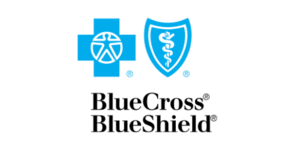
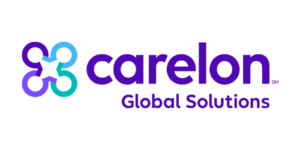
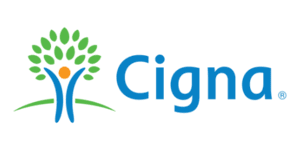



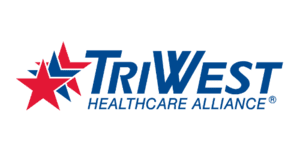
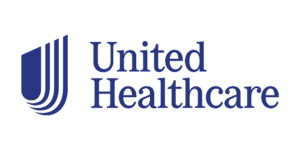
Contact Apex Recovery Tennessee to check your insurance coverage levels and discuss your treatment needs.
How Much Does Addiction Rehab Cost Without Insurance?
So, how much does rehab cost? Addiction treatment pricing without insurance varies widely depending on things like the type of treatment, facility, and location. On average, outpatient rehab costs can range from $2,000 to $10,000, while inpatient rehab costs can be anywhere from $6,000 to $30,000 for a 30-day stay.
While insurance can be a valuable resource for covering addiction rehab costs, it’s important to know that seeking treatment is still possible without insurance. Many facilities offer alternative payment options to make out-of-pocket costs for rehab more manageable for those without insurance coverage. The key is to explore available resources and options, so you can access the necessary support, regardless of your insurance status.
Drug & Alcohol Inpatient and Outpatient Rehab Statistics
Residential treatment was provided by approximately 24-26% of facilities. In contrast, outpatient treatment services were more widespread, with 81-83% of facilities catering to clients seeking flexible and less restrictive treatment options. Notably, 31% of admissions were related to alcohol and other drugs. Among those seeking assistance, 52% were in treatment specifically for drug use alone.
The data also showed 17,353 substance abuse facilities in 2023. The statistics reveal the prevalence of substance use, as an estimated 41 million Americans had used cocaine at some point in their lives by 2021. Additionally, around 300,000 individuals were receiving methadone treatment for substance use disorders in 2020. However, despite these efforts, treatment rates varied, with only 19.7% of those with opioid use disorder, 0.4% of those with alcohol use disorder, and 15.6% of those with pain reliever use disorder receiving treatment. California’s youth, aged 12-17, rank near the highest in substance abuse across the country. Tennessee, meanwhile, has an excessively high rate of drug overdose deaths: 56.6 per 100,000 people compared to the U.S. average of 32.4.
Addiction Treatment Rehab Centers That Offer Payment Plans and Options
Apex Recovery recognizes the need for accessible addiction treatment, especially for those without insurance. Our facilities provide flexible payment plans and options, ensuring that you can receive comprehensive care tailored to your needs and financial circumstances. Explore our Tennessee facilities below to learn more about the supportive environment we offer for lasting sobriety.
- Apex Recovery Brentwood: 209 Ward Circle, Brentwood TN, 37027
- Apex Recovery Columbia: 2710 Trotwood Ave STE A & B Columbia, TN 38401
Fill in the form below to request a call back from Apex Recovery Tennessee
What is the Average Cost of Medical Detox?
The average cost of medical detox depends on factors such as location, severity of the addiction, and the type of facility. On average, medical detoxification expenses can range from $300 to $800 per day. These figures are approximate, though, and the actual cost can vary with individual circumstances and the specific amenities and services provided by the detox facility.
These costs cover medical detox services, often including 24/7 medical supervision, medication management, and personalized care plans designed to address the unique needs of each patient. The expertise of medical professionals in these facilities plays a crucial role in providing a supportive and safe environment for people to begin their recovery journey.
What is the Average Cost of a Drug & Alcohol Inpatient Program?
The average cost of a drug and alcohol inpatient program varies widely, typically ranging from $6,000 to $30,000 for a 30-day stay. However, this cost can fluctuate based on the location of the facility, various amenities, and the specific services included in the program.
These programs involve a range of services designed to provide you with intensive support and care during your recovery journey. They often include medical detoxification, individual and group therapy sessions, counseling, life skills training, and planning for aftercare costs and best practices. Inpatient rehab expenses cover programs that offer a structured and supportive environment where you can focus on overcoming addiction with the guidance of experienced professionals.
What is the Average Cost of a Drug & Alcohol Outpatient Program?
The average cost of a drug and alcohol outpatient program varies, typically ranging from $2,000 to $10,000. This cost depends on elements like the length of the program, the facility location, and the specific amenities included. Outpatient programs offer flexibility for people seeking treatment while allowing them to maintain their daily responsibilities.
Drug and alcohol outpatient programs provide a flexible and supportive approach to recovery. These programs typically involve group and individual therapy sessions, counseling, education, and support groups. Outpatient services are best for people with milder substance use issues or those transitioning from inpatient care, with ongoing guidance and resources to help them maintain sobriety.
What is the Average Cost of a Partial Hospitalization Program (PHP)?
The average Partial Hospitalization Program (PHP) costs vary, typically ranging from $350 to $450 per day, but can vary widely. Partial Hospitalization Programs provide a comprehensive level of care for people who need intensive treatment but do not require 24/7 residential care.
These programs typically include daily therapeutic sessions, counseling, medication management, and support groups. The focus is on providing a therapeutic and supportive environment during the day, allowing people to apply newly acquired skills in their daily lives. PHPs are crucial in helping people transition from more intensive levels of care to a more independent and sustainable recovery.

What is the Average Cost of Mental Health Treatment?
The average cost of mental health treatment ranges from $75 to $300 per session for outpatient therapy, but can be much different in individual circumstances. The cost depends on the type of therapy, the expertise of the mental health professional, and the location of the facility.
Mental health treatment expenses may include psychotherapy, cognitive-behavioral therapy (CBT), dialectical behavior therapy costs, and medication management. Therapists work collaboratively with people to identify and address their mental health challenges.

Check Your Insurance
Apex Recovery Tennessee is in-network and accepts most major health insurance plans to make rehab treatment more accessible. Contact us today to check your coverage!
What is the Average Cost of Dual Diagnosis Treatment?
The average dual diagnosis treatment costs vary drastically, typically ranging from $7,000 to $30,000 per month, depending on many factors like program length and specific services. Dual diagnosis treatment addresses both mental health and substance use disorders concurrently, requiring a comprehensive and integrated approach to support people.
Dual diagnosis programs often include psychiatric evaluations, medication management, individual and group therapy, and integrated interventions to address both aspects simultaneously. The goal is to provide people with the tools and strategies needed to manage their mental health challenges while addressing substance use issues.
What is the Average Cost of Long-Term Drug & Alcohol Addiction Treatment?
The average cost of long-term drug and alcohol addiction treatment, typically lasting more than 30 days, can vary significantly, ranging from $20,000 to $60,000 or more. Long-term addiction treatment programs provide extended support and intensive care, allowing individuals the time needed for sustained recovery and comprehensive skill-building to maintain sobriety.
Long-term drug and alcohol addiction treatment programs go beyond the traditional 30-day model, offering extended care that recognizes the complexity of substance use disorders. These programs often provide a continuum of services, including ongoing therapy, counseling, skill-building sessions, and relapse prevention strategies.
What is the Average Cost of Short-Term Addiction Treatment?
The average cost of short-term addiction treatment, typically lasting 30 days or less, can range from $2,000 to $25,000 or more, depending on services and amenities. Short-term rehab programs offer an intensive, focused approach to address immediate substance use issues and provide people with foundational tools for recovery.
These programs can include detox, individual and group therapy, educational sessions, and relapse prevention planning. While shorter in duration, they initiate the recovery process and equip people with essential tools for their journey to end dependency.
Should I Pay For Drug and Alcohol Addiction Treatment?
Paying for drug and alcohol addiction treatment is a valuable investment in your health and well-being. Seeking professional treatment boosts overall health outcomes, addressing both physical and mental aspects of addiction. While the upfront cost of addiction treatment may seem significant, it pales in comparison to the long-term financial implications of untreated addiction.
Substance abuse treatment costs are worth it, as abuse can lead to severe health issues, legal problems, and strained relationships, resulting in substantial long-term costs. Investing in addiction treatment contributes to improved health and quality of life and helps people avoid the financial consequences associated with ongoing substance use, such as legal fees, medical bills, and lost productivity. At Apex Addiction Recovery Center in Tennessee, we have the solutions you seek to help pay for treatment.
Does Health Insurance Pay For Drug and Alcohol Addiction Treatment?
Yes, health insurance typically covers drug and alcohol addiction treatment to some extent. Many insurance plans include mental health and substance use disorder services as essential health benefits. This coverage can include several aspects of addiction treatment, including medical detox, residential treatment costs, outpatient rehab expenses, therapy, and counseling. However, specific coverage details can vary among insurance providers and plans.
Call us at Apex Substance Addiction Recovery Center at (877) 881 2689 or contact us online. We can check your insurance and verify which services are covered, confirm whether pre-authorization is required, and inquire about any copays or deductibles. Utilizing health insurance coverage for rehab can significantly reduce the financial burden on you and make professional care more accessible.
Apex Recovery Tennessee provides free drug and alcohol addiction assessments as part of the rehab admissions process. Our friendly and experienced team can also check your insurance coverage levels on your behalf. Get in touch to find out more.
How Can I Pay For Drug & Alcohol Rehab Treatment?
Paying for drug and alcohol rehab treatment costs can be facilitated through various ways, making professional help accessible to those seeking recovery. Health insurance is a common path, as many plans cover addiction treatment services. Additionally, rehab facilities often offer flexible payment plans, sliding scale fees, and financing options to accommodate diverse financial situations.
If you or a loved one are considering drug and alcohol rehab treatment expenses and have questions about payment options, call us at Apex Alcohol and Drug Addiction Recovery Center – (877) 793-9877. Our dedicated team is available to discuss your specific circumstances and guide you through the available payment options. Your health and well-being are our top priorities, and we are committed to making quality addiction treatment accessible to all. Call us or contact us today, at Apex Recovery in Tennessee, to explore the options that best suit your path to recuperation.
National Statistics on Drug & Alcohol Inpatient and Outpatient Rehabilitation Treatment
- Residential treatment was provided by 24-26% of facilities in 2020
- Outpatient treatment was provided by 81-83% of facilities
- 31% of admissions were for alcohol and another drug
- Clients in treatment for drug use alone as 52%
- There were 17,353 substance abuse facilities in 2023
- An estimated 41 million Americans had used cocaine at some point in their lives, in 2021
- About 300,000 substance abuse clients on methadone in 2020
- 943,000 people treated for a SUD in a doctor’s office
- 19.7% of those with opioid use disorder – received treatment
- 0.4% of those with alcohol use disorder – received treatment
- 15.6% of those with pain reliever use disorder – received treatment
Sources
- Paying for Mental Health Rehab
- Paying for Therapy





